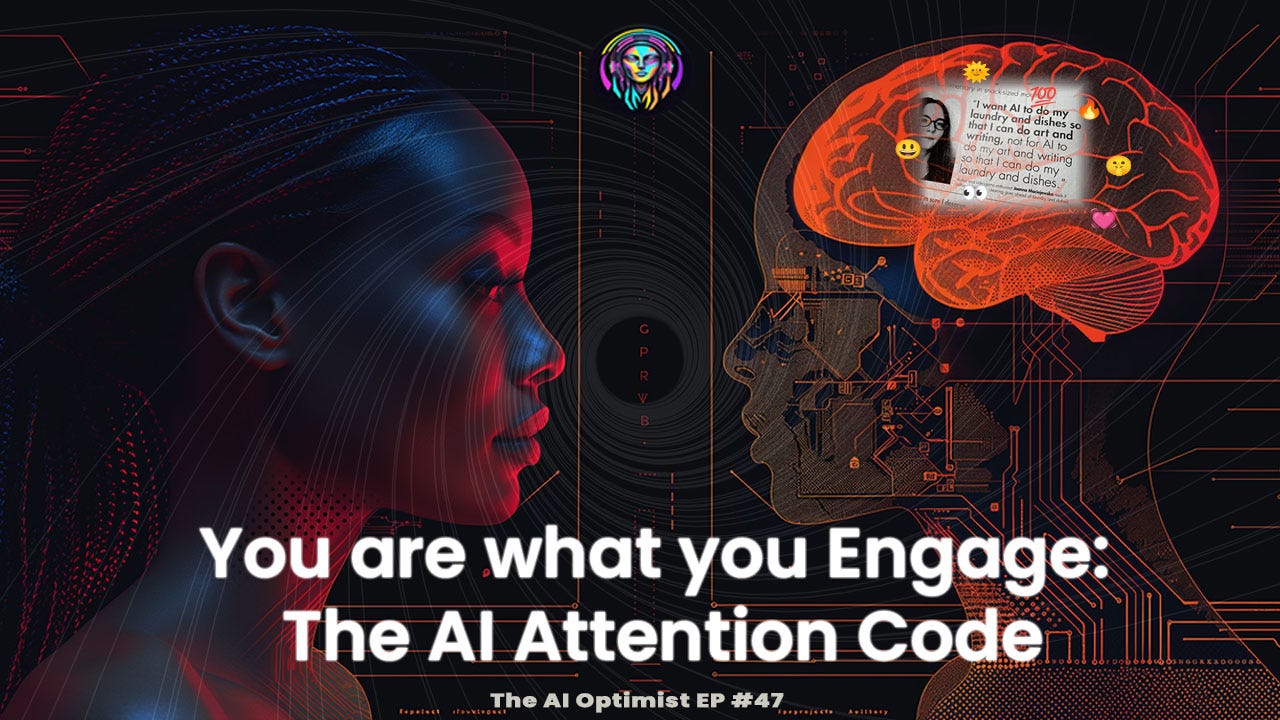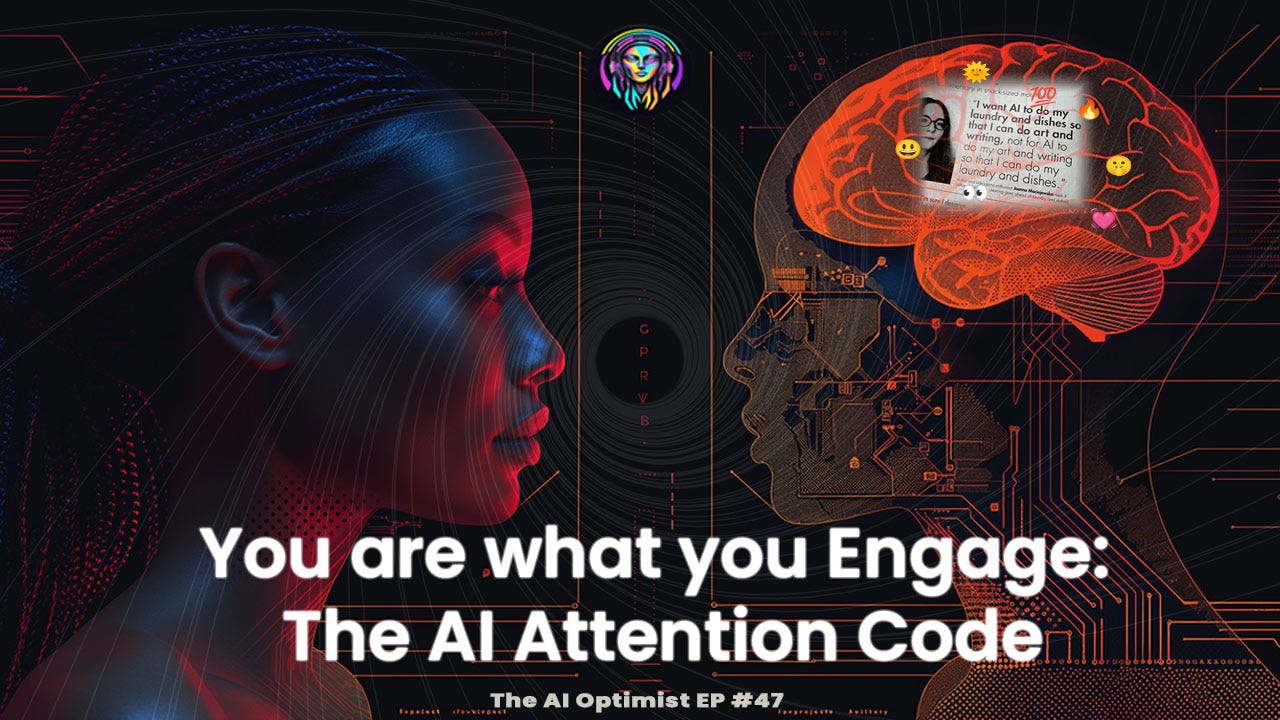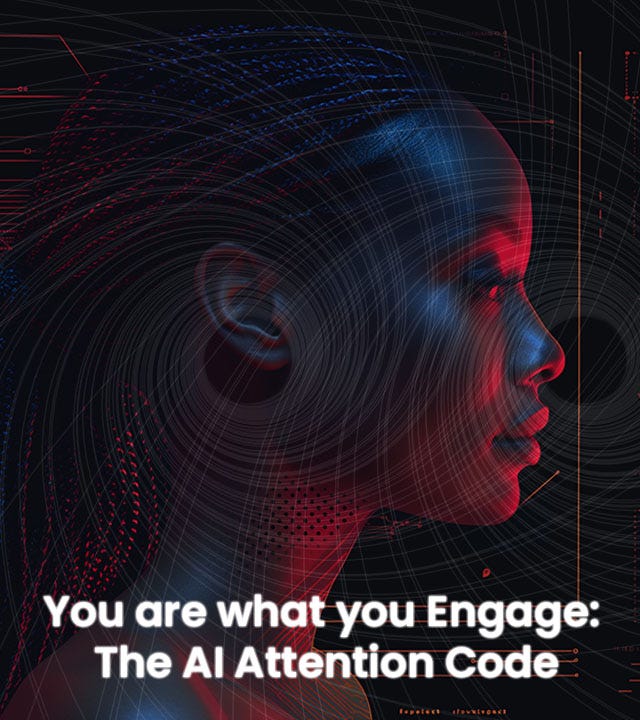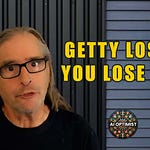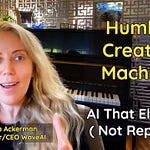Infinite scrolling. Social media is like swimming upstream.
The further you go, the more content you see.
And then that weird old newspaper viral image that snapped up everywhere on my social media last week. Out of nowhere.
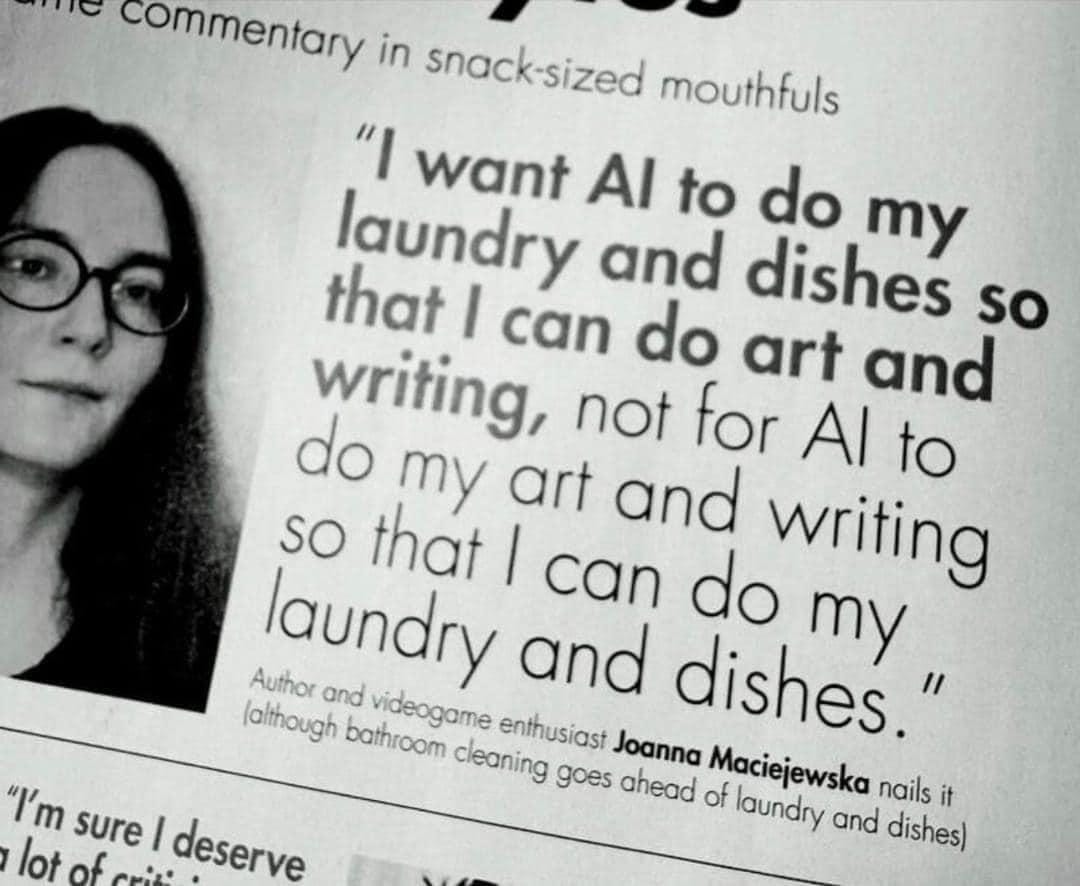
From people I haven't connected to in years. Flooding timelines with this quote:
"You know what the biggest problem with pushing all things AI is? Wrong direction. I want AI to do my laundry and dishes so that I can do art and writing. Not for AI to do my art and writing so that I can do my laundry and dishes."
Joanna Maciejewska
It turns out it wasn't the first time this went viral from an author, not an AI expert. I mean, taking a look at the tweet, I realized that I'm sort of part of what I'm calling the AI attention code.
My actions leading to this viral blast hitting my social media feeds out of nowhere.
Well, let the bashing begin of what we call social engagement. As AI followers keep reminding her, there are robot dishwashers, right?
Bot Handy can move around and do things like set the table
or put away groceries. It flips the script.
Robot vacuum cleaners and even washer/dryer AIs.
What are they talking about? And she, being an author with a small following, reached 2.9 million people when I checked it out as of earlier this week.
She was joking about the dishes, but the idea of creativity being replaced by AI is what triggered those algorithms.
The attention codes that AI has been built into for a really long time used to be called machine learning before it became popular, right? And they go wild.
So why am I getting sucked into an endless spiral of content we already agree with or disagree with? Like this love or hate spectrum that if you like it or don't, it's going to be drawn to you and it creates your whole world of social media now, all created by content.
This is just what social algos love – coded for spectrums of your AI-driven attention. Very important AI-driven content.
Attention becomes AI and data because here's the real reason: we're ad units, not users.
They're not trying to optimize our experience, I'm not putting them all down. But we are ad units, and you are what you engage – the AI attention code.
This is Episode 47 of The AI Optimist, and it's really my wake-up call as a content creator and consumer of social media over the years.
Something you can't see is changing it all. AI again. But AI that's been around, and you don't see, and a lot of us aren't even really debating about it, even though there have been documentaries and specials made about it for years.
Here's how the algos actually work:
First, publisher content gets distributed to 20% of your followers and to a portion of people who are not your followers, but those whose interests align with your content. Then the algorithm measures your content by two things: watch time and engagement.
And it's really a simplification because you're an ad unit.
Like any social media user, engagement is money. Longer, deeper, addictive experiences are big money.
Like I went to Instagram recently, I don't use it frequently, and I saw endless Reels of German Shepherd training at the dogs because I had watched a few.
Now I'm not big at engaging, so my data feed might be dead data indicating my own lack of interest in watching video after video after video of German Shepherd training. But I realize I'm sort of in the minority here.
What's causing this to blow up? Simple behavior.
Your behavior, engagement, activity around content, not just friends and followers. What that says about us and connects us to ad optimization as well. So the content leads to way better targeting.
In fact, in the struggles between Meta and the GDPR about privacy, this is a big issue because if they have to give it away for free without this sort of algorithm, the ad revenue is just not as strong. And it's really
Divided by Design on social media.
And that TikTok social shift that happened around 2020, when the algorithm really took off, turned social community – the old idea of social media – into the AI entertainment spiral.
Today's social isn't about people, it's about content. See the invisible hand behind the scenes of each social platform spins their own algorithms, their own algos.
But TikTok shifted the whole social space from connecting with friends, families, and acquaintances – familiars sharing personal updates, photos, and events, and viewing a feed filled with things from your friends or close friends or friends of friends.
But it's based on relationships, and to our recent and current existence that's been eliminated by the social interest phase of social media that is so skewed on TikTok.
Check out what this person found when they posted a video that got 141,000 views:
"I got a 20-second video with 141,000 views I posted two days ago.
All my traffic came from the For You Page, not my 10K followers, just the For You page."
Ten K followers. No one saw it because they have a "For You" page (FYP) on TikTok that everybody uses, that's just filled up with content that you like, and more and more and more in an infinite scroll.
And it leaves us with a choice.
Choice number one: do you want to play the AI attention code game?
A lot of people enjoy it, not even complaining about that. You're going to do the AI entertainment spiral.
Ad units like us keep swimming upstream, but we begin to acknowledge our own social media habits, at least recognize what you're creating in the content in front of you, because it might be making you sad or depressed.
It might help you, but endlessly repeating what you like doesn't always help.
We scroll, we like, we comment, feeding the algorithm data. They hyper-personalize our feed. Now this creates a comfortable, familiar, safe space.
But it helps us miss out on new ideas and perspectives or being curious. And maybe that doesn't matter, honestly, for most people it probably doesn't.
They pay though, by profitable targeted ads based on what we do with content, with little permission or control on our end.
I mean, social has become a casino of entertainment content that's easy to get into and hard for many people to get out of. Okay, not that hard, but the dopamine-driving behaviors, testing, and scaling are stunning.
So how do you break the cycle?
Now we recognize we're in AI entertainment spirals. How do we break free?
Let's start by finding things that challenge your beliefs, different from you. Follow accounts with different viewpoints.
But you know, if it was that easy, we'd all do it because that's difficult. It's not as friendly as what the algorithms are doing for you.
Exploring topics can be an eye-opening experience, but a lot of us don't mind keeping our eyes closed. And again, it's entertainment.
Choice Two: Aware that social media isn't social, it's interest-driven content.
Content is AI-recommended based on interests, engagement patterns, and the platform's algorithms, not solely from who you know.
The content comes from creators, influencers – accounts whose content may align with you even though they're not connected to you.
Again, content is the connector.
This makes it hyper-personalized, a continuous stream of content in an infinite scroll, encouraging extended engagement.
And it's interest-driven by the platform's recommendations. And again, all this is because we're ad units.
This is the way that it creates the repeat behavior. The more you watch the video, the better it is for them.
So we have a choice in the dance of attention. Do you want to control your attention or be coded?
Part of this is fun though. Not being able to listen to opposing views doesn't help, does it?
But every click, like, and comment – that data is used to make our feeds and keep us glued to our screens.
So if you know you're an ad unit, maybe just back off and realize at a certain point, how much data do you need to feed?
And is this addictive? You can really see these patterns and how much time of day you're spending on this.
Choice three: are you feeling trapped in a cage or feeling good?
Because either way, maybe it does make you feel good.
Are we prisoners? The potential downsides of being in an AI entertainment spiral?
It's fun. Is it hindering creativity, critical thinking, and our ability to connect with people who hold different views?
What's going on is about you and me – human beings caught up in the web of these wicked smart, interest-driven, hyper-personalized, hyper-targeted ads iterating around your behavior.
Optimize yourself and be aware of how much of your activity is gamed and how people appear on social media is not real. It's feeding the algos.
Watch out and don't get consumed by your interests.
And remember, you are what you engage, but you're so much more. The AI attention code is only a limit to what you engage with now.



